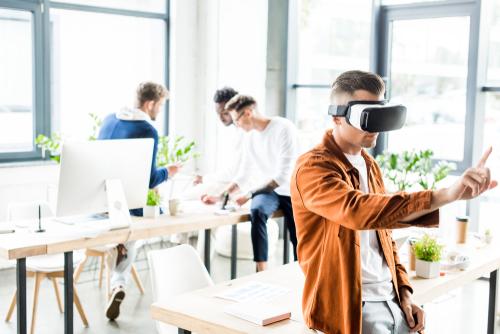How workplace technology will drive safety, space-planning and experience in the New Normal office
Months after the disruptive global shutdown, the world is slowly getting back on its feet. In Asia, Singapore has allowed those who were working from home to slowly return to the office in cohorts. In Hong Kong, most companies have had staggered teams coming into the office. In India, state governments have offered guidelines enabling the return to the office. In short, offices and commercial establishments are now open in most countries, and people are stepping out of their homes again.
But this does not mean that organisations must force their employees to return abruptly. The process must be gradual and necessitates a pull mechanism that entices people to return to work. Part of this pull mechanism entails building trust to assure your people that the work environment has addressed all safety protocols. The other part revolves around creating excitement to return to work – be it through the promise of collaboration, productivity or workplace technology and experiences.
Keeping this in mind, let’s take a look at three areas where the offices are now going to be different from how they were before the lockdown.
Safety: Reversing trends, leveraging technology
Trends that dominated the workplace till early 2020, like densification and open-plan offices are seeing a reversal. In India, workplace density had reached dangerous heights of 50/55 square feet per person in some office categories — in comparison, the standard density in Europe and America was 100-150 square feet.
Today, instead of maximum space utilization, the trends are now dictated by flexibility, distancing and hygiene. Aside from seating plans being de-densified, we’re also seeing corridors being widened and open to unidirectional traffic only, HVAC systems being upgraded to filter and decontaminate air better, and biometric systems and common area facilities becoming touchless. For example, fingerprint authentication would be replaced by face recognition, automatic soap/sanitizer dispensers, sensor-based taps would become common in the washrooms and automatic doors will become the standard.
Additionally, technology will also enable in tracking density in meeting rooms, common areas like break out zones, cafeterias etc., and queuing digitally to not only maintain safety protocols but to also conserve time.
Workplace technology also has a role to play in encouraging specific behavioural changes and enabling a positive workplace experience. For instance, AI-based visitor management systems and reception desk robots are being used to encourage health and hospitality in one stroke.
Space: Designing re-designable workplaces
Today, staggered shifts and smaller cohorts might be the norm for the new office, but once a vaccine becomes more viable and is administered more widely, larger cohorts in more widely-spaced-out workstations might become the next normal. Therefore, accounting for this level of forward-thinking and flexibility right at the design stage is crucial.
The global work from home exercise also threw light on the importance of spaces for focussed work. People whose home environment offered the opportunity for solitude could be more productive than at their workplace. On the other hand, people living in small houses or with larger families often could not carve out a space to work without distraction and could not get as much done and had a higher burnout rate. This implies that besides focusing on collaboration spaces, companies will have to reassess their offices with individual-centric focus spaces as well.
Experience: From analytics to assistance through technology
Biometric data and occupancy reports collected in the new normal office will be crucial to improving air quality and safety & hygiene standards. Aside from that, occupancy and usage data lets organisations tweak the office space and design to better reflect shifts in the way the post-pandemic office will be used.
Of course, in the New Normal, workplace technology has the potential to straddle both analytics and assistance. Artificial Intelligence and data analytics-based apps have the capability to curate better workplace experiences through integration of features such as indoor positioning, workplace chat, office management and interface with building & lighting management systems. This means that complete user experience in the office premises – from a touchless entry into the building to guiding them to the assigned workstation or meeting room – can not only assist occupant experience but also indicate the need for more meeting rooms, for instance. All this would ensure a seamless workplace experience and also a constantly evolving and improving workplace environment.
Given the way the pandemic has progressed, and the way the work from home experiment has panned out so far, organisations will need to create an environment which helps employees thrive, avoid burnout and get them more excited to be at their workplace. Addressing employee concerns around safety and productivity while thinking ahead for the business will go a long way in creating that environment. Let’s discuss how to make this future-forward new workplace a reality.





